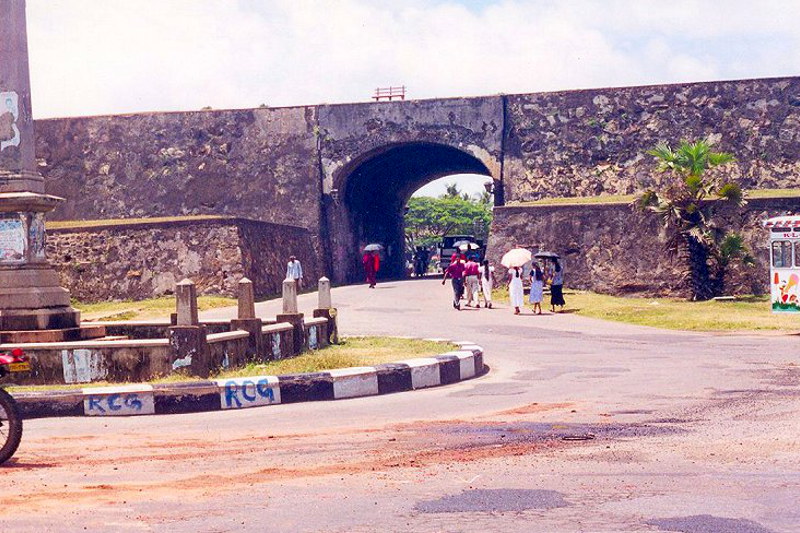I took the train from Hikkaduwa to Galle Fort in Southern Sri Lanka. The train ride was an absolute pleasure because trains in Sri Lanka are much older (antiques) and far less crowded than the ones in India. Little boys put fire crackers on the tracks to scare people and create mischief, but instead we all laughed at their silliness. There was a little blind boy walking up and down the train with his mother, singing on the train; he sang traditional songs in Sinhalese and had the most beautiful voice I have ever heard. The train ride to Galle Fort was worth every moment.
The written history of the Fort in Galle dates back to 1344 when the Muslim traveller Ibn Batuta notes in his journals that he saw Moorish vessels in the harbour of Galle. From this point forward the Fort has had a rather tremulous history and has had as many names as it has had occupiers. Inevitably, because of its strategic position, it was a point of interest for Europeans starting with the Portuguese (1505), the Dutch (1640), and then the English (1795). Other visitors include the Arabs, Moors, Chinese, Malays, South Indians, and Romans.
The Old Fort Gate (right) was completed in 1669 by the Dutch. The Gate is very elaborate and has the inscription for the Dutch East India Company, two British lions and a rooster, which is known as the Cock of Galle. Inside the fort what remains of the architecture is very Dutch. Most of the Portuguese structures were destroyed when the Dutch took over, though bits and pieces still remain and can be found in the occasional nook or cranny.
